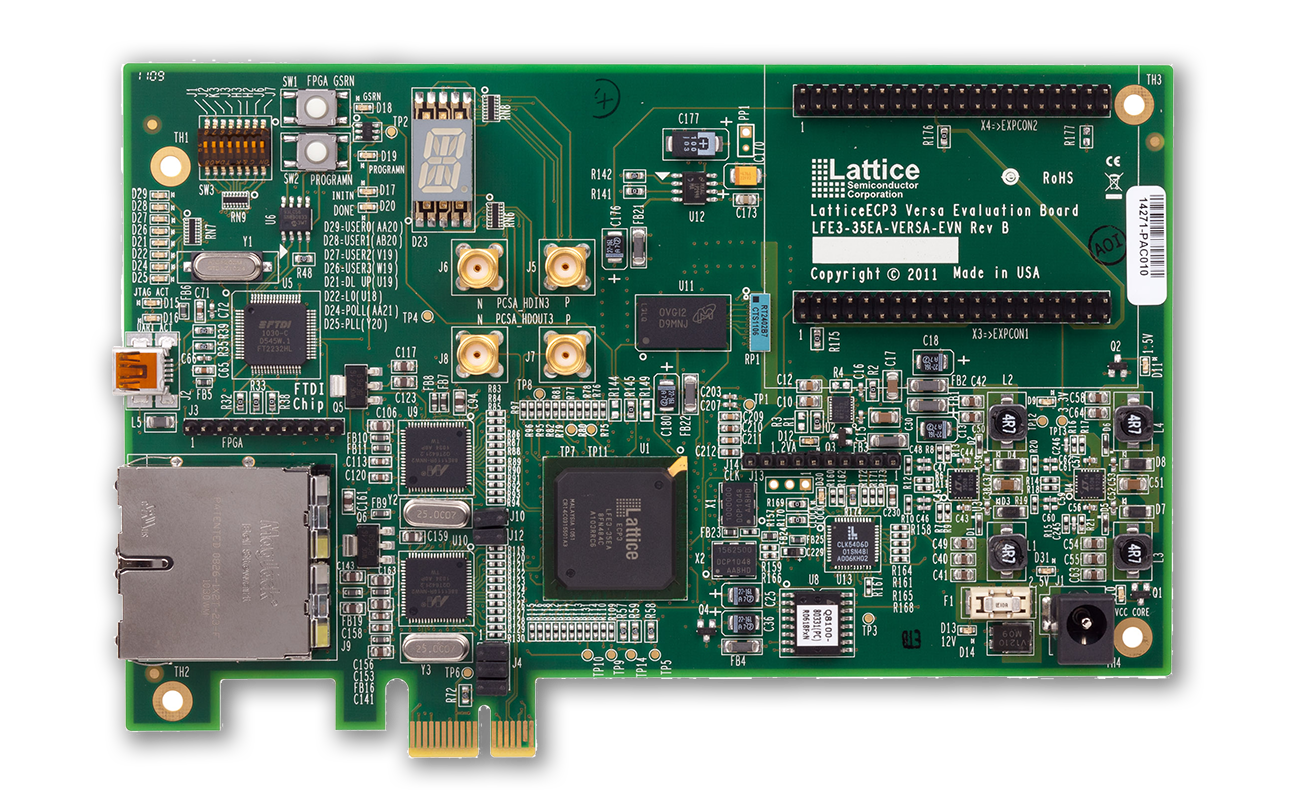Time: 2025-03-18 11:47:02View:
The Lattice ECP3 FPGA family is a popular series of low-power, high-performance FPGAs. One of its key features is the ability to secure the configuration bitstream using encryption to prevent unauthorized access or cloning of the design. Below is an explanation of the encryption method used in Lattice ECP3 FPGAs:

Lattice ECP3 FPGAs use AES (Advanced Encryption Standard) with a 256-bit key to encrypt the configuration bitstream. This ensures that the design loaded into the FPGA remains secure during transmission and storage.
1. AES-256 Encryption:
The configuration bitstream is encrypted using the AES-256 algorithm, which is a widely accepted and secure encryption standard.
AES-256 provides a high level of security, making it computationally infeasible to decrypt the bitstream without the correct key.
2. Volatile and Non-Volatile Key Storage:
The AES key can be stored in volatile memory (SRAM) or non-volatile memory (Flash or EEPROM).
If stored in volatile memory, the key must be reloaded every time the FPGA powers up.
If stored in non-volatile memory, the key is retained even after power cycles.
3. Secure Key Programming:
The AES key is programmed into the FPGA using a secure process, typically through the JTAG interface.
Lattice provides tools like Lattice Diamond Programmer or Lattice Propel to securely program the key.
4. Tamper Protection:
The ECP3 FPGA includes features to prevent tampering, such as disabling readback of the configuration bitstream and key.
5. Bitstream Integrity Check:
The FPGA verifies the integrity of the encrypted bitstream using a Message Authentication Code (MAC) to ensure it has not been altered.
Here’s how the encryption process works for Lattice ECP3 FPGAs:
Generate a 256-bit AES key using a secure random number generator.
Store the key securely, as it is required for both encryption and decryption.
Use Lattice's design tools (e.g., Lattice Diamond) to encrypt the configuration bitstream with the AES key.
The tool generates an encrypted bitstream file that can only be decrypted by the FPGA with the correct key.
Program the AES key into the FPGA using the Lattice programming tools.
Ensure the key is stored securely (volatile or non-volatile memory).
Transfer the encrypted bitstream to the FPGA.
The FPGA decrypts the bitstream using the stored AES key and configures itself.
The FPGA verifies the integrity of the bitstream using the MAC to ensure it has not been tampered with.
Lattice provides several tools to support encryption and secure programming:
1. Lattice Diamond Design Software:
Used to generate and encrypt the bitstream.
Supports AES-256 encryption and key programming.
2. Lattice Programmer:
Used to program the AES key and encrypted bitstream into the FPGA.
3. iCEcube2 (for newer devices, but similar principles apply):
Another tool that supports encryption for Lattice FPGAs.
1. Secure Key Management:
Store the AES key securely and limit access to authorized personnel.
Use non-volatile memory for key storage if the FPGA must retain the key after power cycles.
2. Disable Readback:
Disable the readback feature to prevent unauthorized access to the configuration bitstream.
3. Tamper Detection:
Use additional tamper detection mechanisms (e.g., environmental sensors) to protect against physical attacks.
4. Regular Updates:
Keep the Lattice tools and FPGA firmware up to date to address any potential vulnerabilities.
Protects Intellectual Property (IP): Prevents unauthorized copying or reverse engineering of the design.
Secure Configuration: Ensures that only authorized bitstreams can configure the FPGA.
Tamper Resistance: Provides mechanisms to detect and prevent tampering.
Key Management: If the AES key is lost or compromised, the FPGA cannot be reconfigured.
Performance Overhead: Encryption and decryption add a small overhead to the configuration process.
By using the AES-256 encryption method, Lattice ECP3 FPGAs provide a robust solution for securing FPGA designs. If you need further details or assistance with implementing encryption, feel free to ask!